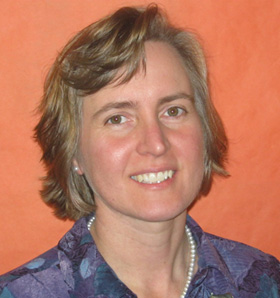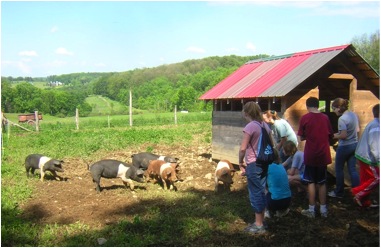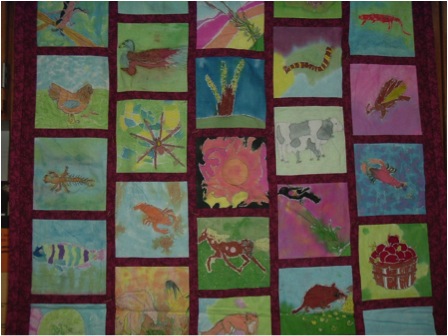
Cooperstown teacher offers farm-fresh curriculum
There is a growing movement in the restaurant and food industries called “ farm-to–table” and “farm-to-fork.” But Cooperstown teacher Amy Parr is all about farm-to–first-class.
Parr’s class, that is. She takes her students on romps in the farms and then, back at school, gives them projects related to the crops that are growing and the animals that live there.
In her world, what happens on the farm does not stay on the farm.

This year, Parr has been wearing the title of Agriculture in the Classroom’s New York Teacher of the Year for her multi-layered efforts in using farms as education fodder. The award is for educators who have incorporated agriculture into a curriculum that is not typically associated with agriculture.
Parr, who is a member of the Cooperstown Faculty Association, teaches junior high life sciences. For years, she has been bringing her students to her parents’ organic dairy farm on the outskirts of Cooperstown in Otsego County. Parr has her students use dairy herd test sheets, or “cow report cards.” Students name each cow and then track their milk production. The milk production is also linked to the water quality of the stream that runs through the farm.
“We tie in the farm eco-system with the water eco-system,” Parr explained. Students, who wade in the stream, explore the aquatic ecosystem and identify insects to help determine water quality. Some years, her students have plotted acres on a nearby farm as a math lesson.
These junior high students are also asked to probe how their food choices affect their own health and the health of the planet, as related to questions on the state science exam. It is the core of Parr’s Agricultural Expedition curriculum.
Some years, she invites farmers into her classroom where students interview them as part of their ELA requirements.
Assignments have included having students sketch what they see at the farm and it surrounding acreage: chickens, ducks, horses, fish, crawdads, fox, insects, cows and calves.
The sketches have been used in different ways over the years. Some drawings were transferred onto fabric and made into a quilt. One year, students made them into bookmarks. Another year they used the sketches as journal covers.

“I’ve never seen a program like hers before,” said Katie Bigness, coordinator of New York Agriculture in the Classroom (www.agclassroom.org). She said she is in “awe” of the different ways Parr brings the farm to life into the classroom.
“Without being pushed in any way, her personal values have helped shape how she wants to teach her students,” said Bigness, whose organization is based at Cornell University and is funded through the Department of Agriculture and Markets.
Parr’s parents retired their dairy farm this past year, although they are still certified organic growers of hay and alfalfa. They also raise heifers. Without access to that dairy farm, Parr, whose sister Lisa Lipitt also teaches in Cooperstown, is now looking at other resources. The local Farmer’s Museum, www.farmersmuseum.org, which features life in the 1840’s, houses sheep, horses, oxen and chicken on a farm. The museum offers an immersion program, along with many lesson plans. Parr has her students study how food and farming have influenced our culture, both past and present.
Here’s how Parr makes the inclusion of agriculture relevant to her students: What place does a cow have in a classroom? How about stalks of wheat? Tomatoes? They have plenty of prize space in a classroom assignment if you are a student and you want to learn how to have a farm where you can grow ingredients for a pizza and not harm the environment. The cow’s milk can become cheese. Wheat can be threshed to make flour, which makes dough for the pizza. Students visited an old threshing barn to see how it was done. Tomatoes, basil and mushrooms can be grown for toppings. Students have to figure out how to grow the crops and keep the water clean that nourishes the crops. Next year, she will have them work out a budget as well.
Studies also include looking at erosion and sustainable sources of compost for the farm.
One of her new tasks as a life science teacher is to take students through a unit on simple machines. Parr, naturally, is going to use farm machines. She enjoys linking the learning standards to communities and to farming, and to help students understand where their food comes from.
As part of her award, Parr traveled this summer to an Agriculture in the Classroom teaching conference in Minneapolis, MN, with Cooperstown school librarian Michelle Hitchcock, who Parr said has been “a wonderful resource and a great help in crafting plans” that incorporate farming. Hitchcock is also a member of the Cooperstown FA, led by Ann Olmstead and Wayne Weir.
- Liza Frenette
(Amy Parr is a member of Cooperstown TA)